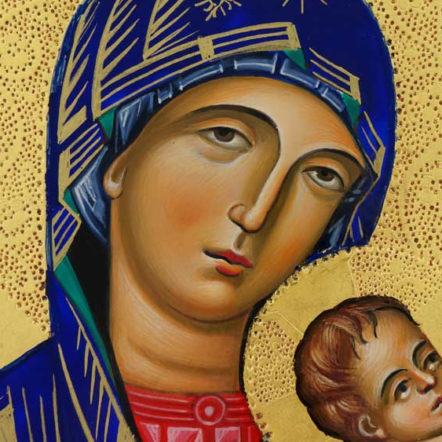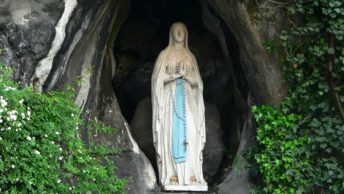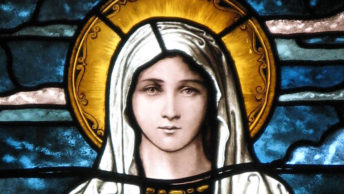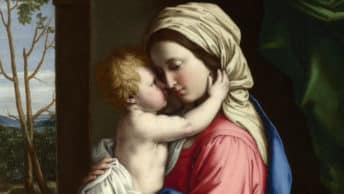When recently one of the innumerable hand-made copies of the icon of Our Lady of Perpetual Help came to visit us at the Sir Anthony Mamo Oncology Centre in Malta, I deeply felt the need to appreciate this singular icon a bit more than I usually do. The more the Lord gave me the grace to appreciate it the more I came to love it and propose it as a sound icon for prayer and meaningful living.
The history of the icon of Our Lady of Perpetual Help, also known as Our Lady of Perpetual Succor, goes back five centuries. Historically the icon was brought to Rome from Crete around the year 1500. On its arrival in the eternal city, the icon found itself placed in the Roman Church of St Matthew. Its stay there lasted some 300 years. Throughout these years countless was the number of the faithful who went to venerate it due to the miraculous healings that were said to have been received by those who prayed before it with faith. However, its stay at St Matthew’s church was abruptly finished by the destruction of this church at the hands of the Napoleonic forces in the year 1789.
As a result of this tragedy the icon was transferred to the private chapel of the Augustinian friars for safety. As time went by the icon of Our Lady of Perpetual Help was practically forgotten. Nevertheless God has his own way as to how he revives things so that through them he continues to save us. It was the year 1855 when the Redemptorists Fathers obtained the land on which the old church of St Matthew once stood, near the basilica of St Maria Maggiore, to build their general curia house. The Redemptorists became acquainted with the fact that exactly in that place where St Matthew’s Church was built, there was a miraculous icon of Our Lady of Perpetual Help. When the icon was found, in the year 1865, the Redemptorists, through their Superior General, officially asked the Pope if they could bring the icon back to its original place. Seeing the legitimate validity of their plea Blessed Pope Pius IX granted their justified request in 1866.
When one looks closely at this icon one immediately recognizes its vastly rich symbolism it magnificently contains. To begin with, we encounter the Greek initials ΜΡ ΘΥ for “Mother of God”, that is Θεο τόκος = Theotokos. Then, Our Lady is splendidly crowned as a tribute to the many miracles brought about by her powerful and maternal intercession under the title of “Perpetual Help”. Furthermore, in the icon we have the detail of a star on Our Lady’s veil. It reminds us that Mary is, in fact, the Star of the Sea who leads us to the safe Port of our salvation to Heaven.
Precisely in the left corner of the upper part of the icon one encounters the Greek initial OAM for “St Michael, the Archangel”. Under these initials one can see the Archangel Michael holding the spear, the wine-soaked sponge, and the crown of thorns, all symbols of Christ’s Passion. Then, in the right corner of the Icon, there is the Greek initial OAΓ for “St Gabriel, the Archangel”. Under the initials the Archangel Gabriel is holding a cross and the nails which are the same instruments of the eventual death which has prompted the Child Jesus to seek his safe refuge in his Mother’s embrace. His veiled hands communicate reverence for holy things. We also notice that the mouth of the Virgin Mary is closed. Twice the Gospel of Luke emphasizes this important point in Mary’s life: But Mary kept all these things, pondering them in her heart (Luke 2:19) and his mother kept all these things in her heart (Luke 2:51). Mary’s silent concentration gently leads us to her large eyes which are sorrowful. After Christ no one can really understand us in our problems better than Mary. In fact, she is seeing all our problems which are always facing us.
The red colour of Mary’ tunic, which the virgins wore at the time, tells us that she is the Queen of martyrs. Let us not forget that her very Son is the Martyr of martyrs. In the icon there are also the Greek initials ΙϹ ΧϹ, which are a traditional abbreviation of the Greek words for “Jesus Christ”. Of particular interest are the hands of Christ, with the palms facing down and nicely put between the hands of his Mother to show that the grace of the Redemption is in the custody of Mary. Having said that Mary is pointing us to Christ the Child. He is The Way, the Truth and the Life (John 14:6) and no one goes to the Father except through Jesus, which is why His gaze is directed at the Father, the invisible God (Col 1:15).
We also notice the yellowish background which spreads all over the icon symbolizing Heaven and its eternal joy. In the heavenly bliss both Jesus and Mary are on the throne. The golden colour of the vestments of the Child Jesus and His Mother Mary suggests the celestial happiness that enriches the grieving human hearts. The dark blue coat is the colour used by mothers in Palestine whereas the little green veil, which is covering Mary’s forehead, was worn by the Jewish girls of the time. Hence, the iconographer wants to convey to us the message that Mary is Mother and Virgin. Mary’s left hand is holding the Child Jesus since she is His Mother. Hers is a consoling hand for you and me when we decide to come to her. The fallen sandal reminds us that perhaps Jesus lost the sandal as he ran to his Mother in search for his protection. After all he too felt the need to be protected by his Mother.
Mary is pointing Jesus at us! She takes us to Him! In his homily on the solemnity of Mary, Mother of God and at the 54th World Day of Peace, on January 1, 2021, Pope Francis said about Mary: “She is not only the bridge joining us to God; she is more. She is the road that God travelled in order to reach us, and the road that we must travel in order to reach him. Through Mary, we encounter God the way he wants us to: in tender love, in intimacy, in the flesh. For Jesus is not an abstract idea; he is real and incarnate; he was ‘born of a woman’, and quietly grew. Women know about this kind of quiet growth. We men tend to be abstract and want things right away. Women are concrete and know how to weave life’s threads with quiet patience. How many women, how many mothers, thus give birth and rebirth to life, offering the world a future!”
O Mother of Perpetual Help, grant that I may ever invoke thy most powerful name, which is the safeguard of the living and the salvation of the dying. O Purest Mary, O Sweetest Mary, let thy name henceforth be ever on my lips. Delay not, O Blessed Lady, to help me whenever I call on thee, for, in all my needs, in all my temptations I shall never cease to call on thee, ever repeating thy sacred name, Mary, Mary.
O what consolation, what sweetness, what confidence, what emotion fill my soul when I pronounce thy sacred name, or even only think of thee. I thank God for having given thee, for my good, so sweet, so powerful, so lovely a name. But I will not be content with merely pronouncing thy name: let my love for thee prompt me ever to hail thee, Mother of Perpetual Help. Amen.
Now I understand why the presence of the icon of Our Lady of Perpetual Help at the Sir Anthony Mamo Oncology Centre has brought us so many graces, support and hope for our patients, their families and, particularly for us, as staff members!








